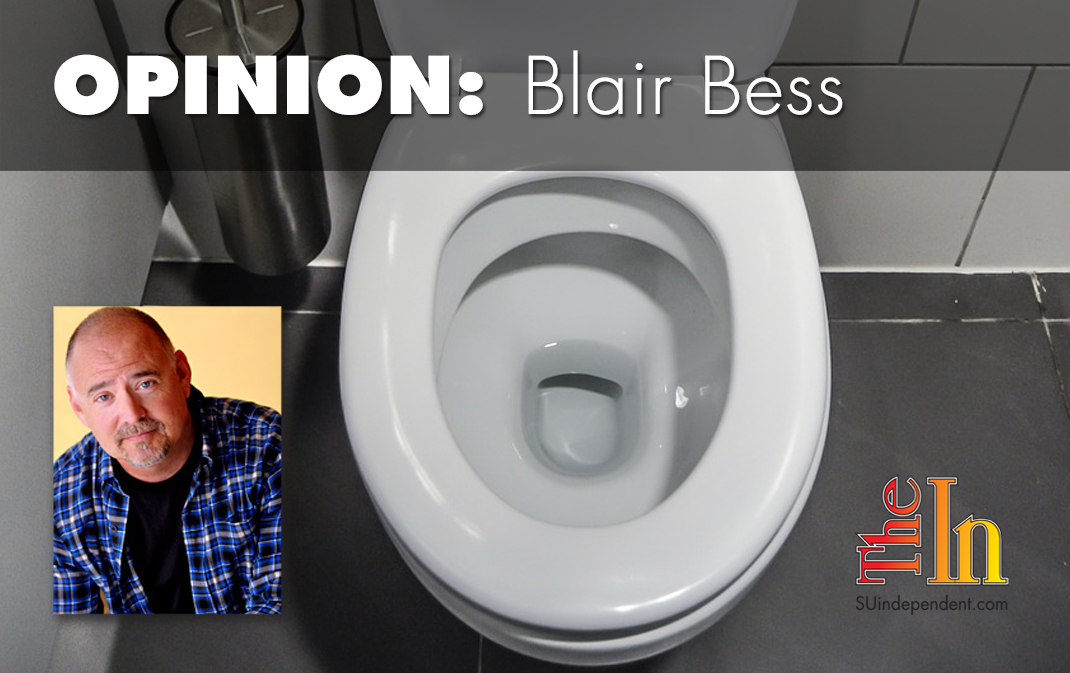
The fine art of politics
By Blair Bess
If you’d never heard of internationally acclaimed graffiti artist Banksy before last week, you may have by now. He’s the guy whose painting entitled “Girl With Balloon” was auctioned off at Sotheby’s in London for $1.4 million dollars.
Shortly after the gavel dropped, the painting mysteriously shredded itself by remote control, eliciting gasps from art aficionados the world over. The moment was captured on smart phones throughout the room and almost instantaneously went viral, becoming the social media meme of the day.
Banksy is a bit of an art anarchist who loves to thumb his nose at the establishment and those who have made him rich. His stunt was meant to poke fun at the excesses of today’s auction market where the works of well known artists have fetched astronomical amounts of money.
London art dealer Offer Waterman told The New York Times last week that after going through the shredder, Banksy’s painting has “become worth more as a conceptual moment than as a work of art itself.” How about this concept: $1.4 million dollars could support an American family with a median household income of $59,055 for about 24 years.
The event (or non-event depending upon how you look at it) staged at Sotheby’s last week was what is often labeled as performance art. A very expensive bit of performance art. Kind of like political campaigns.
Right now, hundreds of millions of dollars are being thrown at candidates throughout the country. Most of them will not be elected. Some never stood a chance. They’ll soon be having their own shreddable moments — here today, gone tomorrow. Once in office, those elected will become the tangible assets of those who funded them. And very good investments indeed. Amortized over time, politicians are worth much more than a Picasso. And contributions are tax-deductible.
Many who acquire great works at auction often remain anonymous. They have an appreciation for the fine arts, but they like their identities kept secret.
Then there are the men, women, and interest groups clandestinely funding candidates seeking office. Those folks have an appreciation for the dark arts, and they like to keep their identities hidden from view as well.
People who help fund grassroots political campaigns are not, by law, allowed to remain in the shadows. Their contributions have limits and their names and dollar amounts contributed are carefully recorded and submitted to the Federal Election Commission. Not so for those contributing to nonprofit organizations that receive millions in unreported “donations” from corporations, unions, and individuals whose names are undisclosed, all hoping to influence election outcomes with their so-called dark money. A recent Supreme Court ruling may change that, but how it impacts these donors in the future remains to be seen.
And speaking of the Supreme Court, let’s look at the Judicial Crisis Network, a dark money conservative advocacy group that sank millions in support of Brett Kavanaugh’s campaign — for that is indeed what it was — for a seat on the court. Now that the battle is behind them, they’re shifting focus.
This past Tuesday, the Judicial Crisis Network announced it was launching a six-figure television and digital advertising campaign “thanking” Maine Senator Susan Collins for voting in favor of now-Justice Kavanaugh. This at a time when a serious challenge for her seat looms on the horizon.
And where does that money come from? Nobody knows. Just like the money used to purchase Banksy’s “Girl With Balloon.”
Is there a realistic way to determine the value of a work of art? Several years back, Banksy voiced the much repeated aphorism that “art is worth whatever someone is willing to pay for it.” As are politicians. Like Susan Collins.
While Banksy may well have pranked collectors with very deep pockets, when it comes to political performance art, the joke is usually at the expense of the average voter. Who often pays a steep price for investments with a much lower rate of return. It’s happened before, it’ll happen again: a case of art history repeating itself.
The viewpoints expressed above are those of the author and do not necessarily reflect those of The Independent.
How to submit an article, guest opinion piece, or letter to the editor to The Independent
Do you have something to say? Want your voice to be heard by thousands of readers? Send The Independent your letter to the editor or guest opinion piece. All submissions will be considered for publication by our editorial staff. If your letter or editorial is accepted, it will run on suindependent.com, and we’ll promote it through all of our social media channels. We may even decide to include it in our monthly print edition. Just follow our simple submission guidelines and make your voice heard:
—Submissions should be between 300 and 1,500 words.
—Submissions must be sent to editor@infowest.com as a .doc, .docx, .txt, or .rtf file.
—The subject line of the email containing your submission should read “Letter to the editor.”
—Attach your name to both the email and the document file (we don’t run anonymous letters).
—If you have a photo or image you’d like us to use and it’s in .jpg format, at least 1200 X 754 pixels large, and your intellectual property (you own the copyright), feel free to attach it as well, though we reserve the right to choose a different image.
—If you are on Twitter and would like a shout-out when your piece or letter is published, include that in your correspondence and we’ll give you a mention at the time of publication.



